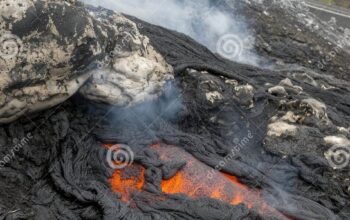The quest to sustain energy resources beyond 2100 encapsulates a conundrum as intricate as interstellar navigation. Humanity stands at a crossroads, grappling with an obligation to mitigate the repercussions of climate change while striving to meet the burgeoning energy demands of an ever-increasing global population. The narratives we sculpt today regarding future energy are not merely tales of technological advancement; they are the fabric through which our progeny will perceive the continuity of progress and sustainability. In contemplating the physics of future energy, we explore not only the modalities of generation and consumption but also the philosophical underpinnings that govern our relationship with energy itself.
At the core of energy sustainability lies the principle of conservation, which dictates that energy can neither be created nor destroyed. Instead, it transfigures from one form to another. This transmutation becomes a pivotal theme when we examine renewable sources such as solar, wind, and hydroelectric power. These mechanisms serve as the celestial engines of our age, transforming the abundant energy from the cosmos into usable forms. The photovoltaic effect, for example, allows sunlight to be converted into electricity, marking a fundamental interaction between photons and semiconductors. This phenomenon underscores the remarkable potential of harnessing the sun, yet it invites inquiries into the sustainability and efficiency of large-scale adoption.
Moreover, energy storage becomes paramount in this dialogue. The intermittency of renewable sources necessitates advancements in energy storage technologies such as lithium-ion batteries and emerging alternatives like solid-state and flow batteries. These innovations act as bulwarks against the volatility of generation, allowing us to harness energy when it is abundant and deploy it when needed. Understanding the thermodynamic principles governing these storage systems is essential as they embody both promise and challenge in achieving a balanced energy grid. The capacity to store energy efficiently may be likened to the discipline of a reservoir; it holds the potential to release life-sustaining resources when the monsoons of production yield their bountiful harvest.
Transitioning to a future powered by renewable energy demands not only technological ingenuity but also an intricate understanding of societal dynamics. Physics interlaces with sociology, as the public perception of energy sources shapes their adoption and implementation. Acknowledging the psychological barriers to embracing renewables requires an exploration of cognitive dissonance, where the urgency of climate change conflicts with established paradigms. Public engagement strategies must evolve, effectively transforming the narrative surrounding renewable energy into one of empowerment rather than restriction.
Furthermore, the emergence of smart grid technology represents a paradigm shift in energy distribution, heralding a new era where data analytics and interconnected systems converge to optimize energy consumption. The implications of this technology extend beyond mere efficiency; they also encompass resiliency in the face of natural disasters and climate-related disruptions. A smart grid functions as a responsive organism, dynamically adjusting to fluctuating demands while integrating decentralized energy resources. This approach resonates deeply with the principles of quantum mechanics, where systems exist in superposition until measured, revealing a dual nature of both uncertainty and potential.
As we envision a future steeped in innovation, it becomes imperative to acknowledge the implications of nuclear energy—a relic of past ambitions, yet ripe with potential for the future. Next-generation nuclear reactors, particularly those utilizing thorium or implementing fusion technology, may encapsulate the promise of virtually limitless energy with minimal waste. Fusion, the process that powers stars, remains tantalizingly close but frustratingly elusive. Its feasibility will rest largely on our grasp of plasma physics and the intricacies of magnetic confinement. Nevertheless, envisioning a world where humanity taps into the very forces that forge celestial bodies elevates the discussion to one of cosmic responsibility.
Identifying pathways for energy generation and storage also invites examination of geography and its inexorable influence on resource availability. Regions endowed with vast solar exposure may serve as the powerhouses of the future, while others may excel in geothermal or wind energy production. Rooting energy strategies in geographical realities fosters a symbiotic relationship where local conditions dictate the most effective energy harvest methods. Thus, the integration of geography into energy planning can be likened to an artist selecting the medium best suited to the canvas.
This exploration leads us to consider the broader ethical implications of energy production and consumption. As the world inches towards a future beyond 2100, issues of energy equity must be front and center. Disparities in energy access can exacerbate socioeconomic inequalities, thus undermining global efforts toward sustainability. The ethical framework guiding energy distribution will need to ensure that innovation benefits all strata of society. Philosophers and physicists alike should engage in discourse on the moral imperative of providing equitable access to renewable resources, thus framing energy as a universal right rather than a mere commodity.
In conclusion, keeping the lights on after 2100 is more than a technical challenge; it is an intricate tapestry woven from threads of physics, societal behavior, technological innovation, and ethical considerations. As we stand on the precipice of this new frontier, the choices we make today will reverberate for generations to come. The metaphorical lights we strive to sustain must illuminate not only our homes but also the pathways toward a sustainable future—a future where the symbiotic relationship between humanity and energy evolves into one of stewardship rather than consumption.












